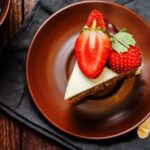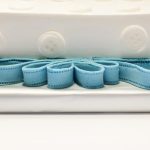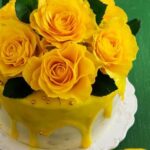Creating a visually appealing cake is an art form, and one of the key elements in achieving a stunning cake design is the use of butter icing decoration. In this article, we will delve into the world of butter icing cake decoration and explore the techniques, tips, and tricks to help you elevate your cakes to a whole new level.
Butter icing cake decoration allows you to unleash your creativity and transform a simple cake into a work of art. Whether you are a beginner or an experienced baker looking to enhance your skills, learning how to make butter icing for cake decoration is essential. From selecting the right tools and ingredients to mastering various decorative styles, we will guide you through every step of the process.
Throughout this article, we will cover everything from understanding the basics of butter icing to advanced decoration techniques and troubleshooting common issues that may arise during the decorating process. So, roll up your sleeves, grab your piping bags, and get ready to embark on a journey into the beautiful world of butter icing cake decoration.
Understanding the Basics
Butter icing is a versatile and delicious way to decorate cakes, whether you’re a baking novice or a seasoned pro. To create the perfect butter icing cake decoration, it’s essential to understand the basics of what ingredients and tools you’ll need. The key components for butter icing include butter, powdered sugar, flavorings such as vanilla extract, and sometimes milk or cream for consistency.
When it comes to tools for butter icing cake decoration, having the right equipment can make the process smoother and more enjoyable. Some essential tools include a stand mixer or hand mixer for blending the ingredients seamlessly, offset spatulas for smooth application of the icing, piping bags and various tips for intricate designs, and a turntable for easy decorating. Having these basic tools on hand will set you up for success when creating your butter icing masterpiece.
To ensure that your butter icing cake decoration turns out just right, it’s important to use high-quality ingredients and the proper tools in order to achieve a smooth texture and beautifully piped designs. Experimenting with different flavor combinations and getting creative with your decorations is all part of the fun of making butter icing cake decorations.
With the right foundation of ingredients and tools in place, you’ll be well on your way to creating stunning cakes that are not only visually appealing but delicious as well.
| Ingredients | Tools |
|---|---|
| butter | stand mixer or hand mixer |
| powdered sugar | offset spatulas |
| flavorings (e.g. vanilla extract) | piping bags and tips |
| milk or cream (optional) | turntable |
Step-by-Step Guide
Gathering Your Ingredients and Tools
Before you start creating your butter icing for cake decoration, make sure you have all the necessary ingredients and tools. You will need unsalted butter, powdered sugar, vanilla extract, and a pinch of salt to bring out the flavors. It is also essential to have a mixing bowl, an electric mixer or stand mixer, spatula, and piping bags with decorating tips.
Mixing the Butter Icing
To prepare the butter icing, start by letting the unsalted butter come to room temperature to ensure smooth mixing. In a mixing bowl, cream the softened butter until it is light and fluffy. Gradually add in the powdered sugar and continue mixing until well combined. Add in the vanilla extract for flavor and a pinch of salt to balance the sweetness. Adjust the consistency with additional powdered sugar or a splash of milk if needed.
Coloring and Flavors
Once your basic butter icing is ready, you can get creative by adding colors or flavors to enhance your cake decoration. Divide the icing into separate bowls if you wish to create different colored icings. Use gel food coloring for vibrant hues without altering the consistency of the icing. For additional flavors, consider adding extracts such as almond or lemon zest for a twist on traditional buttercream. Experiment with different combinations to achieve unique and delightful decorations for your cakes.
Choosing the Right Cake Base
When it comes to creating a beautifully decorated cake with butter icing, selecting the right cake base is crucial. The texture and flavor of the cake can greatly impact the overall look and taste of your creation. Here are some tips for choosing the perfect cake for your butter icing decoration:
- Consider the density of the cake: A denser cake, such as a pound or sponge cake, works well for intricate designs and layering buttercream icing. Lighter cakes may not hold up as well under the weight of the icing.
- Think about the flavor profile: Choose a cake flavor that complements or enhances the flavor of your butter icing. For example, a rich chocolate cake pairs beautifully with vanilla buttercream, while a lemon cake goes well with a citrus-flavored icing.
- Take into account the height of the cake: Taller cakes provide more surface area for decorating with butter icing. Consider baking two layers or stacking smaller cakes to create a taller canvas for your decoration.
In addition to these tips, it’s important to ensure that your chosen cake base is sturdy enough to support the weight of the butter icing and any additional decorations you plan to add. A firm base will prevent your decoration from sinking or collapsing. Finally, make sure that your cake is completely cooled before applying any butter icing to avoid melting or sliding off.
Whether you opt for a classic vanilla sponge, a decadent red velvet, or a flavorful carrot cake, selecting the right base for your butter icing decoration sets the foundation for a visually stunning and delicious treat. Experiment with different types of cakes to discover which ones work best with your preferred decorating style and techniques.
With the perfect combination of flavors, textures, and aesthetics, you’ll be able to create memorable and impressive butter icing cakes that are sure to impress any audience.
Techniques and Tips
When it comes to butter icing cake decoration, there are numerous techniques and tips that can help you achieve different decorative styles. One of the most popular ways to decorate a cake with butter icing is through piping. Piping allows you to create intricate designs and patterns on your cake, adding a professional touch to your creation. To pipe butter icing successfully, it is important to use the right consistency of frosting and practice proper piping techniques.
Another way to achieve different decorative styles with butter icing is by using different types of nozzles for your piping bag. Different nozzles create different shapes and textures, allowing you to experiment with various designs on your cake. For example, a star-shaped nozzle can create beautiful rosettes or swirls, while a round nozzle can give you more control over outlining or writing on the cake.
Aside from piping, you can also use tools like spatulas, palette knives, or even cookie cutters to create unique patterns and textures with butter icing. Spatulas are great for creating smooth finishes or textured effects on the surface of the cake. Palette knives are perfect for creating marble-like swirls or gradient colors on your cake.
And cookie cutters can be used to create fun shapes or borders on the sides of your cake. Experimenting with these tools can help you discover new ways to elevate your butter icing cake decoration game.
Advanced Decoration
The key to taking your butter icing cake decorations to the next level lies in mastering advanced techniques for intricate designs and piping. From elegant floral patterns to intricate lace-like tracery, the possibilities are endless when it comes to decorating a cake with buttercream. Piping bags with various tips, such as round, star, petal, leaf, and specialty tips, open up a world of creative options for your cake decorating projects.
To create delicate lace patterns on your cakes using butter icing, consider investing in a lace mold or decorating comb tool. By spreading a thin layer of buttercream onto the cake and then gently pressing the mold or comb onto the icing, you can achieve stunning lace designs that will impress your guests.
Another advanced technique involves using stencils to create intricate patterns on your cake surface. Simply place the stencil over the iced cake and carefully fill in the design with colored buttercream using a small spatula or piping bag.
For those looking to add dimension and texture to their butter icing decorations, consider incorporating three-dimensional elements like fondant flowers or sugar pearls. By strategically placing these embellishments on your cake, you can create a visually stunning masterpiece that will be both beautiful and delicious. Experimenting with different colors and textures of buttercream can also elevate your cake decorating game and add unique flair to your creations.
Remember, practice makes perfect when it comes to mastering advanced decoration techniques with butter icing. Don’t be afraid to try new ideas and push yourself creatively. With time and dedication, you’ll soon be creating show-stopping cakes that will leave everyone in awe of your skills.
| Advanced Decoration Techniques | Piping Techniques |
|---|---|
| Using lace molds or combs for delicate designs | Experimenting with different piping tips for varied effects |
| Adding three-dimensional elements like fondant flowers | Creating intricate details with stencil patterns |
Troubleshooting
When it comes to decorating a cake with butter icing, it’s essential to be prepared for common issues that may arise during the process. Here are some tips on how to troubleshoot and fix these problems:
1. Butter Icing is Too Thin: If your butter icing is too thin and runny, it may not hold its shape when you try to pipe decorations onto the cake. To thicken it up, try adding more powdered sugar gradually until you reach the desired consistency. You can also refrigerate the icing for a short while to help firm it up.
2. Butter Icing is Too Thick: On the other hand, if your butter icing is too thick and difficult to spread or pipe smoothly, you can add a small amount of milk or cream to thin it out. Make sure to do this slowly and mix well after each addition until you achieve the right texture.
3. Air Bubbles in Icing Decoration: Sometimes air bubbles can get trapped in your butter icing while piping decorations, which can ruin the smooth finish of your design. To prevent this issue, gently tap the filled piping bag on a flat surface before starting to pipe. You can also use a toothpick to release any air bubbles that form as you decorate.
By following these troubleshooting tips and tricks, you’ll be better equipped to handle any challenges that come your way while decorating with butter icing. Remember that practice makes perfect, so don’t get discouraged if things don’t turn out exactly as planned on your first attempt. Keep experimenting and refining your skills to create beautiful and delicious cake decorations that will impress everyone who sees them.
Finishing Touches
Adding the final embellishments and extras to your butter icing cake decoration can truly take it to the next level. These finishing touches can make your cake stand out and leave a lasting impression on your guests. From simple additions to more elaborate decorations, there are endless possibilities to enhance your butter icing creation.
Edible Decorations
One way to add a special touch to your butter icing cake is by incorporating edible decorations. This can include fresh fruit, chocolate shavings, edible flowers, or even gold leaf for a touch of elegance. Edible decorations not only add visual appeal but also provide additional flavors and textures to your cake.
Cake Toppers
Another popular option for adding a finishing touch to your butter icing cake is using cake toppers. Whether it’s personalized with a message or theme-specific, cake toppers can instantly elevate the look of your creation. With a wide range of options available, you can choose one that complements the design of your butter icing decoration.
Specialty Tools
Utilizing specialty tools such as piping bags with different tips, stencils, or airbrush kits can help you create intricate designs and patterns on your butter icing cake. These tools allow for more precision and creativity in decorating, allowing you to achieve professional-looking results easily. Experimenting with these tools can lead to unique and stunning finishes on your cakes.
Conclusion
In conclusion, mastering the art of butter icing cake decoration is a delightful way to showcase your creativity and baking skills. By following the step-by-step guide provided in this article, you have learned the basics of preparing butter icing, selecting the right cake base, achieving different decorative styles, and even creating intricate designs using piping techniques. Understanding how to make butter icing cake decoration opens up a world of endless possibilities for creative expression in the kitchen.
As you continue to hone your skills in butter icing cake decoration, remember to keep experimenting with new techniques and designs. Don’t be afraid to try out different styles or incorporate your own unique ideas into your creations. Whether you’re decorating a simple birthday cake or a fancy tiered wedding cake, each creation presents an opportunity to showcase your artistic flair and bring joy to those who get to enjoy your delicious masterpiece.
So, gather your ingredients and tools, let your imagination run wild, and get ready to create stunning butter icing cake decorations that will leave a lasting impression. Remember that practice makes perfect, so don’t get discouraged if your first few attempts aren’t exactly what you envisioned. With time and dedication, you’ll soon be able to create show-stopping butter icing cake decorations that will wow your friends and family. Happy decorating.
Frequently Asked Questions
How to Make Decorations With Buttercream?
Making decorations with buttercream involves using a piping bag fitted with different tips to create various shapes and designs. It is important to ensure that the buttercream is at the right consistency for piping, neither too stiff nor too runny, to achieve clean and precise decorations.
How Do You Make Butter Icing Stick to Cake?
To make butter icing stick to a cake, it is crucial to ensure that the cake is completely cooled before frosting it with buttercream. Applying a crumb coat first, then chilling the cake before adding the final layer of buttercream helps the icing adhere better to the cake surface.
How Do You Make Buttercream Icing Patterns?
Creating patterns with buttercream icing involves using different piping tips or tools to make designs such as swirls, rosettes, shells, or even intricate flowers. Practice and steady hands are key in achieving professional-looking patterns on cakes or cupcakes. Experimenting with different techniques can lead to unique and beautiful buttercream decorations.

Welcome to my blog about home and family. This blog is a place where I will share my thoughts, ideas, and experiences related to these important topics. I am a stay-at-home mom with two young children. I hope you enjoy reading it! and may find some helpful tips and ideas that will make your home and family life even better!





